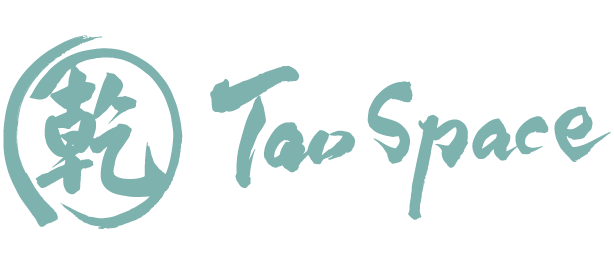Even though today we know this list to be more extensive, in 1979 the World Health Organization (WHO) published the following list of common conditions proven to respond to CM Acupuncture:
Mental-Emotional: *Anxiety *Depression *Stress * Insomnia
Upper Respiratory Tract: *Acute sinusitis * Acute rhinitis
*Common Cold * Acute Tonsillitis
Respiratory System: *Acute bronchitis
*Bronchial asthma (most effective in children and in patients without complicating diseases)
Disorders of the eye: *Acute conjunctivitis * Central retinitis
*Myopia (in children) * Cataract (without complications)
Disorders of the mouth: *Toothache, post extraction pain. * Gingivitis
*Acute and chronic pharyngitis
Gastro-intestinal disorders: *Spasms of the esophagus and cardia. *Hiccough
*Acute and chronic gastritis * Gastric hyperacidity
*Chronic duodenal ulcer (pain relief) * Acute duodenal ulcer (without complications)
*Acute and chronic colitis * Acute bacillary dysentery *Constipation * Diarrhea
*Paralytic ileus
Neurological and Musculo-skeletal Disorders: *Headache and migraine *Trigeminal neuralgia (TMJ)
*Facial palsy (early stage, i.e. within six months)
*Paresis (partial paralysis) following a stroke *Peripheral neuropathies
*Sequelae of poliomyelitis (early sage i.e. within six months)
*Meniere’s disease *Neurogenic bladder dysfunction
*Nocturnal enuresis (bedwetting). *Intercostal neuralgia *Cervicobrachial syndrome *“Frozen shoulder” *”Tennis elbow“ * Low-back pain
*Sciatica *Osteoarthritis
Today’s clinical practice shows that Acupuncture and other CM modalities can also be used effectively in either assisting or treating:
*Abscesses
*Acute Injury: strains, sprains, non-healing wounds, frostbite, gangrene, infection, rabies, scorpion, snake or centipede bites.
* Addiction: alcohol intoxication, withdrawal from psychiatric drugs, smoking cessation.
*Allergies *Arthritis: osteoarthritis, rheumatoid arthritis.
*Back and Spine disorders: ankylosing spondylitis, spinal degeneration, pain.
*Blood disorders: blood pressure, anemia, leucopenia.
*Body odour or sweating disorders * Bone disorders: enlargement, spurs and others.
*Chest and rib disorders
* Cancer support: strengthening the body, mitigating chemotherapy side effects, detox after chemo or radiation treatment.
* Diabetes
*Digestive and intestinal disorders: Crohn’s disease, hemorrhoids, stomach pain, nausea, ulcer, stomach prolapse, constipation, acid reflux, dry heaves, hernia, hiccups, intestinal pain, IBS (irritable bowel syndrome), poor digestion, rectal prolapse etc.
*Ear disorders: tinnitus, sudden hearing loss, otitis. * Edema: peripheral, whole body.
*Exhaustion and fatigue * Extremities: pain, paralysis, weakness
*Eye disorders: Glaucoma, astigmatism, cataracts, conjunctivitis, strabismus, optic nerve atrophy, stye, herpes in the eye etc.
* Face and Jaw disorders: Bell’s Palsy, bruxism, TMJ disorders, trigeminal neuralgia.
* Fibromyalgia *Flank and waist disorders
* Foot and ankle disorders: pain, sprain, cold feet, numbness, neuroma, plantar fasciitis.
* Gallbladder disorders * Gout
*Gynecological conditions : breast diseases-tumor, premenstrual breast pain, amenorrhea, dysmenorrhea, irregular menstruation, PMS (Pre Menstrual Syndrome), cervical dysplasia, uterine or ovarian cysts or tumors, tipped uterus, hormone imbalance, endometriosis, PCOS (Polycystic Ovaries Syndrome) , infertility, unstable pregnancy, miscarriage, gestational hyperthyroidism, uterine pain due to abortion, breech position in pregnancy, morning sickness, preeclampsia, difficult labor, lactation issues, mastitis, uterine prolapse, retention of placenta, vaginal swelling specially after labour, post-partum depression, post-partum care, menopause hot flashes and night sweats.
*Headache and Migraines
* Head (internal disorders): brain injuries, swelling, brain tumor (benign), contusion, cerebrovascular disease, coma, concussion, dizziness, vertigo, Meniere’s disease, TIA (Transient Ischemic Attack) or CVA (Cerebrovascular Accident).
*Heart disorders: angina, arteriosclerosis, bradycardia, coronary heart disease, enlarged heart, myocarditis, palpitations, irregular heartbeat, pericarditis, etc.
*Heat stroke * Hemiplegia and Stroke
* Hip or groin disorders * Immune and autoimmune disorders
*Insomnia * Jaundice
*Kidney and urinary disorders: bladder prolapse, edema, interstitial cystitis, nephritis, PKD (Polycystic Kidney Disease), kidney stones, enuresis (bed wetting) hematuria (blood in the urine), proteinuria, urinary incontinence, urinary bladder stone, UTI (Urinary Tract Infection), urine retention etc.
*Leg and knee disorders: sprains, soreness, heaviness, numbness, arthritis, injuries, cold, pain, edema, weakness, etc.
*Liver disorders: cirrhosis, hepatitis, hepatomegaly, polycystic liver.
*Low back disorders: acute and chronic lower back pain, coccyx pain or injuries, herniated disc, ischial nerve pain.
*Lung disorders: asthma, bronchitis, cough, COPD (Chronic Obstructive Pulmonary Disease), cystic fibrosis, emphysema, pneumonia, pleurisy, pleuritis, wheezing etc.
*Male sexual conditions: impotence, infertility, nocturnal emission, premature ejaculation, prostate diseases, testicular pain etc.
*Mental health conditions: ADD (Attention Deficit Disorder) ADHD (Attention-Deficit/Hyperactivity Disorder), Alzheimer’s, agitation, amnesia, irritability, bipolar disorder, depression, hyperactivity, mania, hysteria, neurosis, PTSD (Post Traumatic Stress Disorder)
*Mouth Disorders: canker sores, aphasia, bad breath, bleeding gums, deviation of the mouth, gingivitis, lip or mouth ulcers or tumors, sudden loss of voice, toothache etc.
*Multiple Sclerosis
*Muscular disorders: atrophy, spasm, weakness.
*Nasal disorders: atrophy, blockage, congestion, pain, dryness, nosebleed, rhinitis, sinusitis.
*Neck disorders: cervical injury, spondylosis, pain, stiff neck, whiplash.
*Nerve disorders: nerve damage, compression, pain, neuralgia, paralysis.
*Neuropathy or numbness
*Obesity and weight loss
*Osteoporosis
*Parkinson’s disease
*Pediatric disorders: abdominal bloating, asthma, fever, bed wetting, drooling, malnutrition, convulsion, lung problems, asthma, pneumonia etc.
*Polio
*Rheumatism
*Scarlet Fever
*Sexually Transmitted diseases: herpes, gonorrhea, HIV support treatment.
*Shock
*Shoulder disorders: frozen shoulder, pain, numbness.
*Skin disorders: acne, facial pigment changes, itching, poison oak, psoriasis, eczema, scabies, shingles, tinea (skin fungus), urticaria (hives).
*Spasms, tremors, convulsions
* Spleen disorders: Splenomegaly
* Throat disorders: difficulty swallowing, itchy throat, fish bone stuck in the throat, laryngitis, pharyngitis, scrofula, sore throat, throat abscess or tumor, tonsilitis, vocal cord polyps.
*Thyroid disorders: Hyperthyroidism, hypothyroidism, thyroiditis, enlarged thyroid (goiter), Grave’s disease.
*Toxic exposure to chemicals or drugs.
* Vascular disorders: varicose veins, vascular disease.
* Wrist, hand and finger disorders: numbness, pain, sweaty palms, carpal tunnel, tendinitis etc.
Acupuncture is a very significant branch of Chinese Medicine, and it has been used in China for thousands of years.
Acupuncture consists on the application of very thin - disposable needles through the skin of certain places of the body called acupoints. Acupoints are small areas that carry specific functions and are situated at energy pathways called meridians. Meridians have the function of nourishing and connecting our internal organs, our different body systems and other meridians with each other, acting as an organic and wholistic energy-web.
Disease occurs due to the imbalance of Yin-Yang in our organs-viscera and/or due to the disturbance of the flow of blood, nutrition and Qi (a form of vital energy pronounced “chee”) in the meridians. Acupoints are stimulated with the insertion of needles where a specific manipulation will be performed according to the case, in order to rebalance the flow of Qi and blood at the affected meridian and/or in order to rebalance internal organs-viscera as well.
The differentiation of what are the patient’s needs, lies on the ability of the Registered Acupuncturist to perform the adequate diagnosis, plan and execution of treatment, which is done very thoroughly and carefully.
CM pulse palpation, meridians and acupuncture points (acupoints) palpation, tongue observation, full inquiry of the patient’s symptoms, onset and history, auscultation, observation of the patient’s appearance, body movements etc. are all part of the tools used in CM diagnosis.
An Acupuncture session can be very relaxing and many patients actually fall asleep during the treatment, feeling afterwards relaxed and at the same time refreshed and energized. The insertion of very thin, sterilized and single-use needles should produce little to no pain. The sensation of De Qi (the arrival of Qi-energy in the acupoint) can be described as tingling, electricity, warmth, local light pressure etc.
The number of sessions required varies between 1 and 15 or more, depending on the nature of the patient’s illness (if either acute or chronic) his/her body constitution and vital energy to heal.
Even though there are many health-care professions that carry acupuncture as part of their education/curriculum allowing them to perform acupuncture as a complement to their area of expertise, only practitioners that have passed their acupuncturist board exam and are Registered with the College of Traditional Chinese Medicine Practitioners and Acupuncturists of Ontario (CTCMPAO) are authorized to diagnose patients and treat conditions that belongs not only to muscle-skeletal issues, but also chronic and internal diseases as well.
Acupuncture provided by a Registered Acupuncturist under the standards of CTCMPAO has a broader scope of practice. It honours CM’s philosophy of holism, acting as a tool for healing according to the patient’s CM diagnosis, which evaluates the person as a whole complex organism. It is also reimbursable under most extended health insurance plans.
Acupuncture provided by a Registered Acupuncturist under the standards of CTCMPAO has a broader scope of practice. It honours CM’s philosophy of holism, acting as a tool for healing according to the patient’s CM diagnosis, which evaluates the person as a whole complex organism. It is also reimbursable under most extended health insurance plans.
There’s also a distinction between dry needling and acupuncture. Dry needling is a technique used by Western practitioners such as physiotherapists, chiropractors, and occupational therapists etc., that is based on strictly body anatomy in opposed to CM principals. Thin metal needles are inserted in specific muscle trigger points to release tension and pain. Dry needling does not apply any CM principals nor diagnosis. Hence, dry needling practitioners are not necessarily receiving the same level of training as set out by the standards of CTCMPAO. In other words, those who practise dry needling might not meet the requirements to use the title of "Registered Acupuncturist" or "Registered Traditional Chinese Medicine Practitioner" in the province of Ontario.
Moxibustion (moxa) is an ancient form of therapy that uses dried burning leaves of the herb 艾叶(ai ye) Artemisia Argyi or Artemisia Vulgaris, commonly known as mugwort, to generate heat and provide therapeutic effects. This herb is usually prepared in a shape of a cigar to facilitate its application.
The functions of the mugwort herb are: to stimulate the circulation of Qi and Blood in the selected acupoint, area or meridian, to expel cold, transform dampness, stop pain and strengthen the immune system.
Indirect Moxibustion is safe and should not burn or hurt. Blisters could happen, therefore the constant communication between patient and practitioner is important in order to keep the moxa stick at a comfortable distance where the heat will feel pleasant and relaxing.
Cupping can be used quite successfully to treat musculoskeletal issues, fascial adhesion, common cold, issues caused by wind, cough, asthma, stomach problems, nausea, abdominal pain, digestive disorders, painful menstruation, fever, hypertension, paralysis caused by stroke, hiccups, insomnia etc. It also helps the body to detox, promotes blood flow, pain relief, drains the lymphatic system and more.
Cupping can affect tissues up to four inches deep—impacting blood vessels, fascia, muscles, and scar tissue. More and more, cupping is showing up in physical therapy and massage offices as well, under a different name—myofascial decompression (MFD).
The benefits of Gua Sha are numerous. It resolves spasms and pain, and promotes normal circulation to the muscles, tissues and organs, as seen in Gua Sha’s immediate effect on coughing and wheezing. Research has shown that Gua Sha causes a four-fold increase in microcirculation of surface tissue and can reduce inflammation and stimulate the immune system. Gua Sha upregulates heme-oxygenase- 1(HO-1), that acts to reduce internal organ inflammation, for example, in cases of asthma, hepatitis and liver disease.
The patient experiences immediate changes in stiffness and pain with increased mobility.
Because Gua Sha mimics sweating, it can help resolve fever. Gua Sha cools the patient who feels too warm, warms the patient who feels too cold, while relaxing tension and reducing anxiety. Gua Sha should be considered for any illness or condition where touch palpation indicates there is Sha (stiffness and pain).

